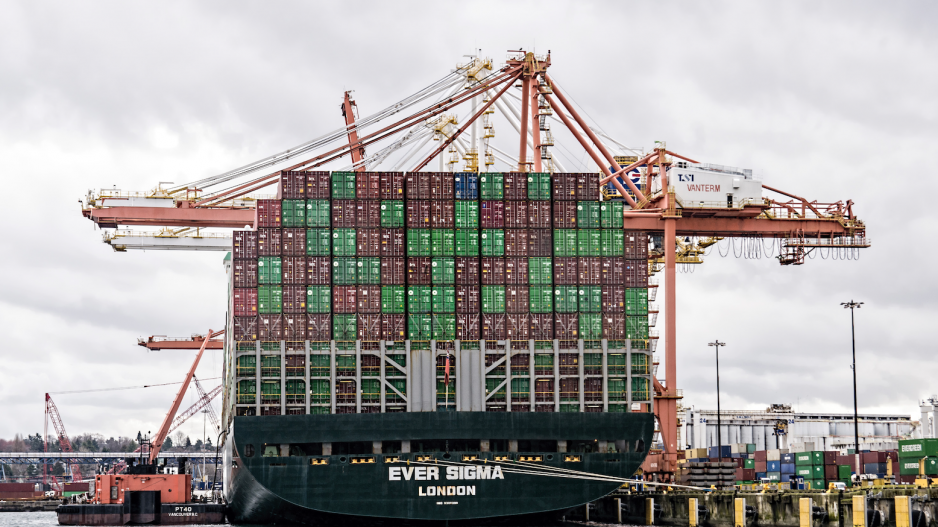Statistics sa国际传媒 data backs up what many expected: sa国际传媒's July port strike hurt the country's imports and exports.
International Longshore and Warehouse Union sa国际传媒 workers shut down more than 30 port terminals and other sites in sa国际传媒 between July 1 and July 13, including sa国际传媒's busiest, the port of Vancouver. Workers then came to terms with the BC Maritime Employers Association with a new contract in early August.
In July, customs-basis imports that were cleared in sa国际传媒 marine ports were down 18.5 per cent compared with June (not seasonally adjusted), according to Statistics sa国际传媒. This represented the strongest decline in July, from June, since 2005, according to the national number cruncher.
When the data are adjusted for seasonality, widespread declines in overall imports from countries on the Pacific Rim—such as China, Taiwan, South Korea, Peru and Japan—were seen in July on a balance-of-payments basis, according to Statistics sa国际传媒.
Trade with South Korea was particularly hard hit, according to the data. sa国际传媒 exported $381 million worth of products to South Korea in July, down a whopping 63.1 per cent from $1.03 billion in the same month in 2022. Imports with that northeast Asian nation fell by 16.4 per cent, to $775 million in July from $927 million in the same month one year earlier.
Canadian exports to Japan fell by 31.2 per cent in July, to $1.076 billion from $1.565 billion in the same month one year earlier. Imports to Japan, however, somehow were able to rise by 10.7 per cent to $1.138 billion in July, from $1.028 billion in the same month in 2022.
"A lot of the declines were around coal markets, as well natural resource markets, that we do ship to," said Central 1 chief economist Bryan Yu.
sa国际传媒 also saw the value of its trade with the U.K. suffer in July. Exports to the U.K. were down 39.1 per cent to $1,048 billion. Yu said that this decline partly stemmed from what Statistics sa国际传媒 called a 60.5-per-cent decline in imports of unwrought gold, silver, and platinum group metals, and their alloys. That decline was because there was a lower amount of gold asset transfers between financial institutions, he said.
Much of the changes in the value of different Canadian product categories for imports and exports is confounded by the fact that most Canadian trade is with the U.S. and is not sent via ports in sa国际传媒, Yu said.
Nonetheless, imports of goods that typically arrive through sa国际传媒 marine ports, such as consumer goods, electronic products and industrial machinery and equipment, were down, he said.
Exports leaving sa国际传媒 marine ports also decreased in July, falling 23 per cent to their lowest level since February 2020.
While Statistics sa国际传媒 data show declines in overall exports to countries such as Japan, South Korea and India, exports to China posted a large increase. This rise was mainly the result of higher exports for canola, as grain terminals remained active during the strike, according to Statistics sa国际传媒. Exports of coal, potash, and pulp and paper were among the notable July declines in terms of products typically exported through sa国际传媒 ports.
"We have seen in sa国际传媒, however, that the overall [trade] trend has been a little bit weaker in recent months anyways," Yu said. "Part of that is commodity prices, or fuel prices that were not great either."





